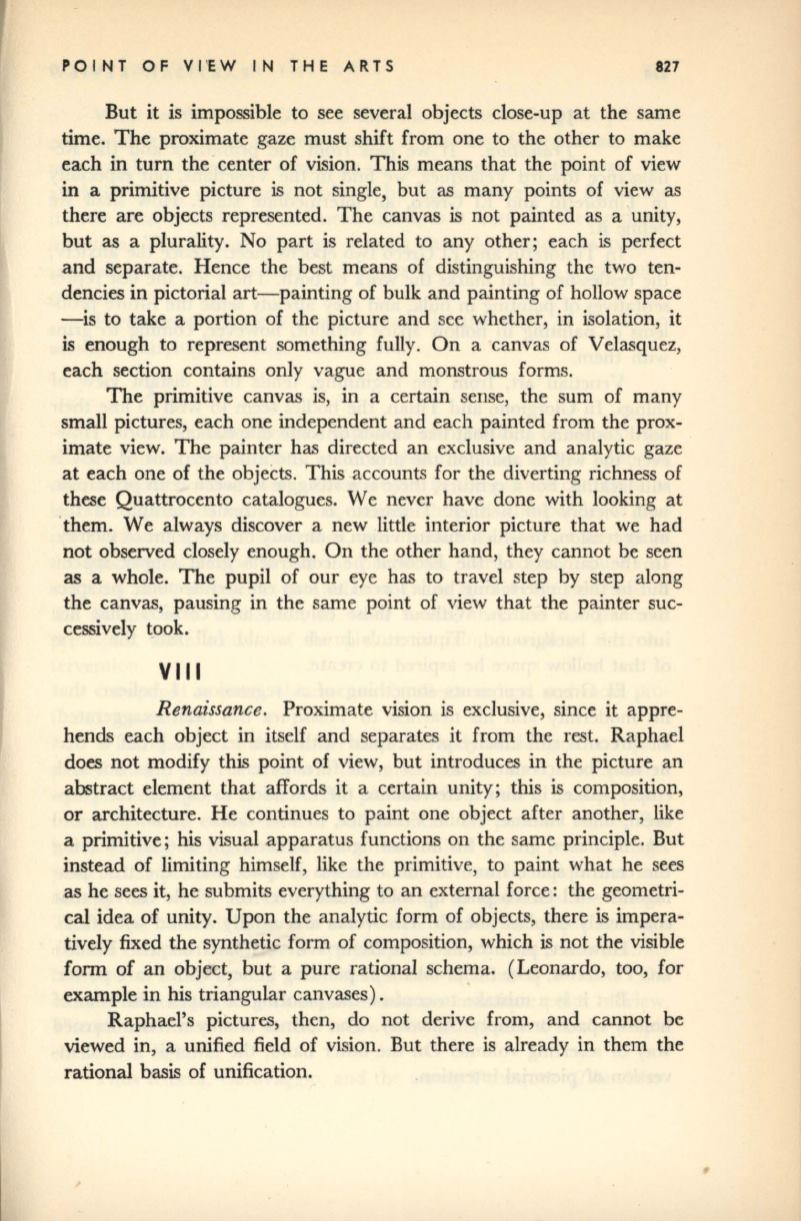
POINT OF VI 'EW IN THE ARTS
827
But it is impossible to see several objects close-up at the same
time. The proximate gaze must shift from one to the other to make
each in turn the center of vision. This means that the point of view
in a primitive picture is not single, but as many points of view as
there are objects represented. The canvas is not painted as a unity,
but as a plurality. No part is related to any other; each is perfect
and separate. Hence the best means of distinguishing the two ten–
dencies in pictorial art-painting of bulk and painting of hollow space
-is to take a portion of the picture and see whether, in isolation, it
is
enough to represent something fully. On a canvas of Velasquez,
each section contains only vague and monstrous forms.
The primitive canvas is, in a certain sense, the sum of many
small pictures, each one independent and each painted from the prox–
imate view. The painter has directed an exclusive and analytic gaze
at each one of the objects. This accounts for the diverting richness of
these Quattrocento catalogues. We never have done with looking at
them. We always discover a new little interior picture that we had
not observed closely enough. On the other hand, they cannot be seen
as a whole. The pupil of our eye has to travel step by step along
the canvas, pausing in the same point of view that the painter suc–
cessively took.
VIII
Renaissance.
Proximate vision is exclusive, since it appre–
hends each object in itself and separates it from the rest. Raphael
does not modify this point of view, but introduces in the picture an
abstract element that affords it a certain unity; this
is
composition,
or architecture. He continues to paint one object after another, like
a primitive; his visual apparatus functions on the same principle. But
instead of limiting himself, like the primitive, to paint what he sees
as he sees it, he submits everything to an external force: the geometri–
cal idea of unity. Upon the analytic form of objects, there is impera–
tively fixed the synthetic form of composition, which
is
not the visible
form of an object, but a pure rational schema. (Leonardo, too, for
example in his triangular canvases) .
Raphael's pictures, then, do not derive from, and cannot be
viewed in, a unified field of vision. But there is already in them the
rational basis of unification.
•


